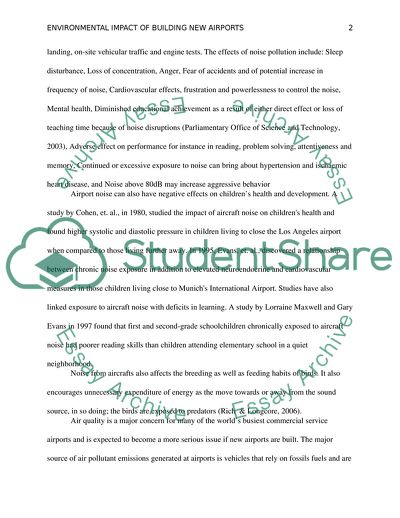Cite this document
(Environmental Impact of Building New Airports Coursework Example | Topics and Well Written Essays - 2000 words, n.d.)
Environmental Impact of Building New Airports Coursework Example | Topics and Well Written Essays - 2000 words. https://studentshare.org/environmental-studies/1873882-it-is-important-to-assess-the-environmental-impact-of-building-new-airports
Environmental Impact of Building New Airports Coursework Example | Topics and Well Written Essays - 2000 words. https://studentshare.org/environmental-studies/1873882-it-is-important-to-assess-the-environmental-impact-of-building-new-airports
(Environmental Impact of Building New Airports Coursework Example | Topics and Well Written Essays - 2000 Words)
Environmental Impact of Building New Airports Coursework Example | Topics and Well Written Essays - 2000 Words. https://studentshare.org/environmental-studies/1873882-it-is-important-to-assess-the-environmental-impact-of-building-new-airports.
Environmental Impact of Building New Airports Coursework Example | Topics and Well Written Essays - 2000 Words. https://studentshare.org/environmental-studies/1873882-it-is-important-to-assess-the-environmental-impact-of-building-new-airports.
“Environmental Impact of Building New Airports Coursework Example | Topics and Well Written Essays - 2000 Words”. https://studentshare.org/environmental-studies/1873882-it-is-important-to-assess-the-environmental-impact-of-building-new-airports.


